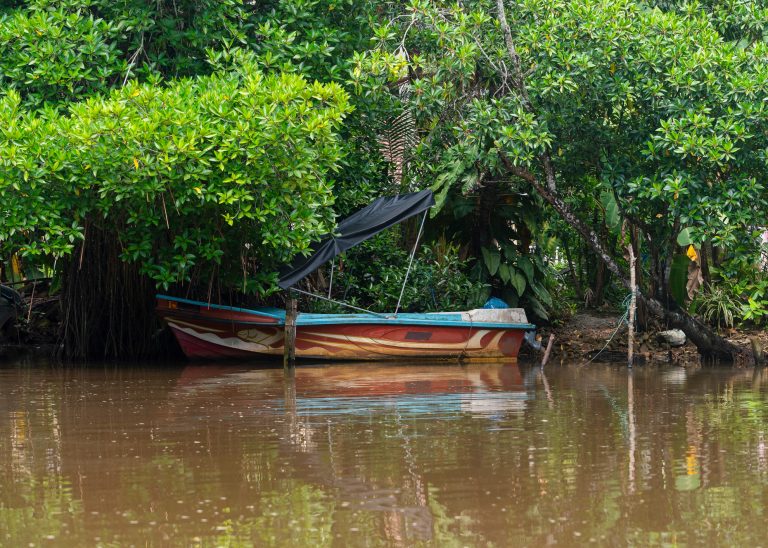Mangrove conservation
in Sri Lanka
A bottomless pit leads to success
Mangroves are true wonders of nature. They protect coasts and shores, prevent erosion, filter pollutants, and maintain water quality. They are also enormous carbon sinks. Mangrove forests absorb more than twice as much carbon dioxide as tropical rainforests. A mature tree can absorb about 21 kilograms of CO₂ per year, young trees significantly less. With a lifespan of 100 years, a tree could absorb about one ton of CO₂.
Start-up aid for mangrove saplings
DER Touristik Foundation supports the project partner Wildlife and Ocean Resource Conservation (WORC) in protecting and preserving these precious ecosystems by restoring mangrove forests in the Koggala Lagoon – for the inhabitants, but also for visitors.









Source: Wildlife and Ocean Resource Conservation
In 2017, mangrove trees began to be planted in mud-filled bottomless barrels along the shore. About three years after planting, special roots develop and form a natural shore barrier in front of the lagoon. The root system of a mangrove plant must be protected for at least seven years so that it can survive even in the case of severe erosion.
After eight years, the barrel is removed and decomposes naturally – the trees now grow freely. A great byproduct is that the mud layer within and around the barrels encourages the expansion of the mangroves in the area.
By planting mangroves, the project not only contributes to nature conservation, but also to reducing CO₂ emissions:
trees are planted as part of the project.
0
Community based restoration
Students from the five schools in the Koggala Lagoon regularly visit WORC’s mangrove project. In class, they learn about the newly planted mangrove trees and what is needed to care for them. Adult residents such as fishermen and public sector workers around the lake are also involved. They learn about
the importance of mangroves for their habitat. Fishing families also receive more modern fishing nets, which are easier to use in the ecosystem near the shore.
The people around the lagoon earn their living mainly from fishing and tourism. The increasing eco-tourism promoted by WORC will open up new sources of income for the region in the long term. The construction of an information center and the establishment of a mangrove tree nursery bring visitors closer to the mangrove conservation project.
The tourist boat tours to the mangrove forests are also be improved further; for instance, the guides are now trained lifeguards, and the boats have new life jackets.


The people around the lagoon earn their living mainly from fishing and tourism. The increasing eco-tourism promoted by WORC will open up new sources of income for the region in the long term. The construction of an information center and the establishment of a mangrove tree nursery bring visitors closer to the mangrove conservation project. The tourist boat tours to the mangrove forests are also be improved further; for instance, the guides are now trained lifeguards, and the boats have new life jackets.
And even more consequences:

On Ganduwa Island, additional sources of income in tourism are being created by promoting the cinnamon industry. The families living there receive, among other things, cinnamon plants, organic fertiliser and the technical know-how to grow the spice, which is in great demand on the world market. Tourists can visit the cinnamon island on excursions and also buy the products of the locals.
Our cooperation partner:
Wildlife and Ocean Resource Conservation (WORC)
This non-profit organisation has been focusing on the conservation and restoration of ecosystems in Sri Lanka since 2010. Among other things, it supports the protection and restoration of mangrove forests in Koggala and the protection and restoration of coral reefs in Rumassala at community level. WORC also offers travel experiences in all these areas. All income from ecotourism is used to fund ongoing protection and restoration work.
